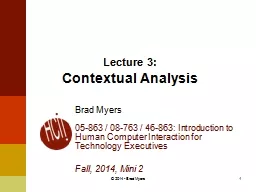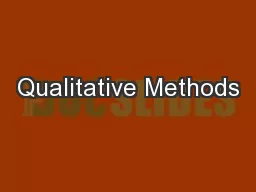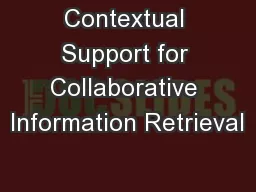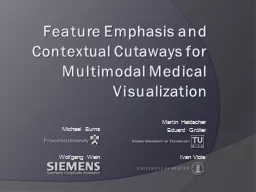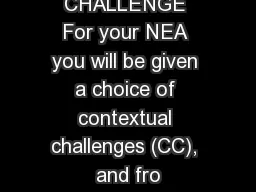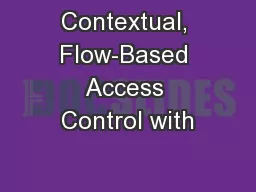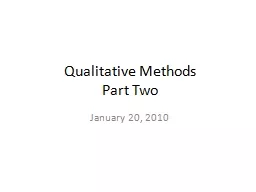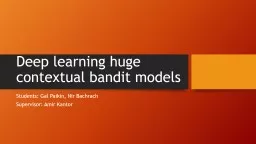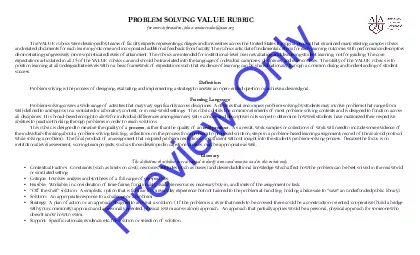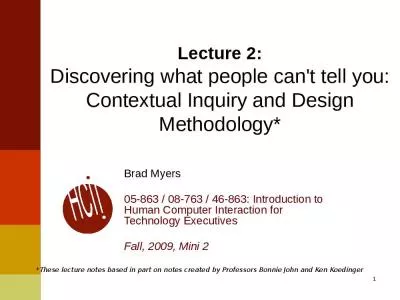PPT-1 Lecture 3: Contextual Analysis
Author : impristic | Published Date : 2020-07-04
Brad Myers 05863 08763 46863 Introduction to Human Computer Interaction for Technology Executives Fall 2015 Mini 2 2015 Brad Myers Initial Questions for
Presentation Embed Code
Download Presentation
Download Presentation The PPT/PDF document "1 Lecture 3: Contextual Analysis" is the property of its rightful owner. Permission is granted to download and print the materials on this website for personal, non-commercial use only, and to display it on your personal computer provided you do not modify the materials and that you retain all copyright notices contained in the materials. By downloading content from our website, you accept the terms of this agreement.
1 Lecture 3: Contextual Analysis: Transcript
Download Rules Of Document
"1 Lecture 3: Contextual Analysis"The content belongs to its owner. You may download and print it for personal use, without modification, and keep all copyright notices. By downloading, you agree to these terms.
Related Documents

